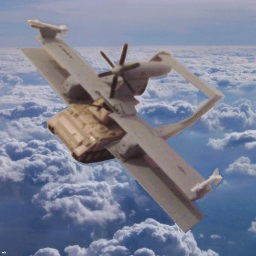- cross-posted to:
- [email protected]
- cross-posted to:
- [email protected]
cross-posted from: https://sh.itjust.works/post/29570853
Light fighter fans would tell you everything about turn-rate, speed, and agility and how heavy fighters are nothing more than failures and death traps. But if you really think about it, heavy fighters are simply advanced machines too ahead of their time, failed by the technological limitations of their era. Being twin-engine do-everything multirole fighters they are literally the precursor to what modern fighters like the F-15 and Su-27 would become! I love heavy fighters, I love heavy fighters, I love heavy fighters, I want a P-38 to [My lawyer has advised me not to finish this paragraph]


I love the P-38 … the Fork Tailed Devil. A deadly long range weapon too because two big engines could carry more weight in fuel … and the cannons all concentrated in one spot meant that the pilot didn’t have to calculate where their bullets would triangulate in front of them for maximum damage. Guns placed apart in each wing meant that they had to calibrate them to converge at a certain point in front for maximum efficiency. Not having an engine in the nose cone meant they could pack a lot of machine guns and ammunition in there.
It also has the unofficial distinction of likely being the first aircraft to break the sound barrier. Apparently it had a deadly design flaw … I forget the details but basically if it pitched forward too far, it would go into a steep dive which increased its speed, as it increased in speed, the rear spoiler would cause it to tilt even further forward, further forward and increase speed and on and on … more forward, faster, more speed, more forward tilt … it was a deadly cycle for pilots. This meant that if a pilot lost control of this fatal flaw, it would end up flying straight down often at very high speed.
There were many reports at the time in the war that involved a P-38 crashing to the ground with two obvious thuds in quick succession. It’s speculated that the first thud was the plane breaking the sound barrier … and the second was the plane hitting the ground.
It was experiencing “compressibility” where some of the airflow over parts of the wing was exceeding the speed of sound.
https://www.planeandpilotmag.com/news/2022/06/09/why-were-p-38s-falling-from-the-sky/
I remember reading a bunch about the P-38 when I was high school because I loved this design so much.
Wasn’t one of the ways that early pilots dealt with these types of situations was to try to ‘power’ their way out of it … thinking that increasing speed meant that it would possibly correct the problem they were having. It took a while before they figured out the problem with the ‘compressibility’ issue … and they had plenty of pilots attempt to increase speed not knowing that they were signing their death warrant.